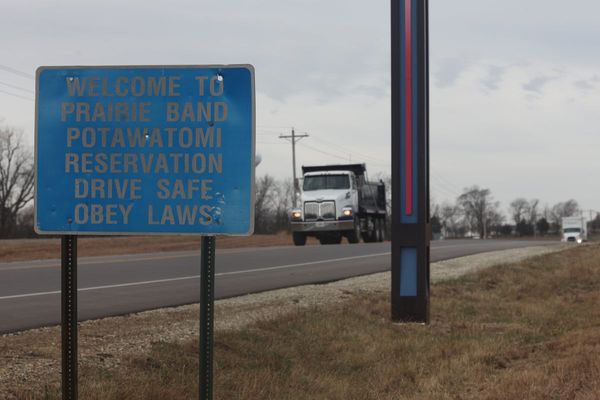The middle class has long been the backbone of the American economy, representing stability, opportunity, and the promise of upward mobility. But lately, many families are feeling squeezed, watching their financial security slip away despite working harder than ever. If you’ve noticed your grocery bill creeping up, your savings shrinking, or your dreams of homeownership fading, you’re not alone. The signs that the middle class is vanishing in real time are all around us, impacting everything from daily routines to long-term plans. Understanding these warning signals is crucial—not just for your own household, but for the future of our communities and the country as a whole.
Let’s break down the ten most telling signs that the middle class is disappearing before our eyes, and what you can do to protect your financial well-being.

1. Stagnant Wages Despite Rising Costs
One of the clearest signs that the middle class is vanishing in real time is the disconnect between wages and the cost of living. While prices for essentials like food, housing, and healthcare have soared, paychecks have barely budged for many workers. This wage stagnation means families are forced to stretch every dollar further, often sacrificing savings or quality of life just to keep up. If your income feels stuck while your expenses keep climbing, you’re experiencing a core challenge facing the middle class today.
2. Homeownership Slipping Out of Reach
Owning a home was once a hallmark of middle-class stability. Now, skyrocketing home prices and higher interest rates have pushed this dream out of reach for many. First-time buyers are especially hard hit, struggling to save for down payments as rents rise and inventory shrinks. The result? More families are renting long-term, unable to build equity or put down roots. Pew Research Center highlights how homeownership rates have stalled, reflecting a major shift in what it means to be middle class.
3. Shrinking Emergency Savings
A healthy middle class is built on financial security, but today, many households have little or no emergency savings. Unexpected expenses—like a car repair or medical bill—can quickly derail a family’s budget. If you find yourself dipping into credit cards or loans to cover basic emergencies, it’s a sign that the financial cushion once typical of the middle class is eroding.
4. Healthcare Becoming a Luxury
Access to affordable healthcare has become a growing concern for middle-class families. Rising premiums, deductibles, and out-of-pocket costs mean that even those with insurance may avoid necessary care. Medical debt is now a leading cause of bankruptcy, and many are forced to make tough choices between health and other essentials. This shift is a stark indicator that the middle class is vanishing in real time.
5. Higher Education Out of Reach
A college degree was once a ticket to the middle class, but soaring tuition and student debt have changed the equation. Many families can no longer afford to send their children to college without taking on significant loans. As a result, the path to upward mobility is narrowing, and the financial burden of education is weighing down future generations.

6. Rising Childcare Costs
Childcare expenses have exploded, often rivaling the cost of rent or a mortgage. For many middle-class families, paying for quality childcare means making sacrifices elsewhere or even leaving the workforce. This financial strain limits opportunities and makes it harder for families to get ahead.
7. Multiple Jobs, Less Security
It’s increasingly common for middle-class workers to juggle multiple jobs or side hustles just to make ends meet. While gig work offers flexibility, it rarely provides benefits or long-term security. This shift from stable, full-time employment to piecemeal work is a clear sign that the middle class is vanishing in real time.
8. Retirement Dreams on Hold
Saving for retirement has become a luxury for many. With pensions disappearing and 401(k) balances lagging behind what’s needed, more people expect to work well past traditional retirement age. If you’re worried about outliving your savings or delaying retirement, you’re not alone—this is a growing reality for the shrinking middle class.
9. Food Insecurity on the Rise
Grocery prices have jumped, and more middle-class families are turning to food banks or government assistance to put meals on the table. USDA data shows that food insecurity is no longer limited to the poorest households. If you’re cutting back on groceries or skipping meals to save money, it’s a troubling sign of the times.
10. Community Services Under Strain
Public schools, libraries, and local services are feeling the pinch as tax bases shrink and budgets tighten. Middle-class families rely on these resources, but cuts mean fewer opportunities and less support. When community infrastructure weakens, everyone feels the impact, and the sense of shared prosperity that defines the middle class begins to fade.
Reclaiming the Middle-Class Dream Starts with Awareness
The signs that the middle class is vanishing in real time are impossible to ignore, but recognizing them is the first step toward change. By staying informed, advocating for policies that support working families, and making smart financial choices, you can help protect your household and your community. The middle class may be under pressure, but with awareness and action, there’s hope for a more secure future.
How have you noticed changes in your own financial situation or community? Share your thoughts and experiences in the comments below.
Read More
10 Ways Greedflation Is Costing You More When Shopping for Food
Retailers Are Secretly Raising Prices Before Discounting Them—Here’s Proof
The post 10 Signs the Middle Class Is Vanishing in Real Time appeared first on Grocery Coupon Guide.







